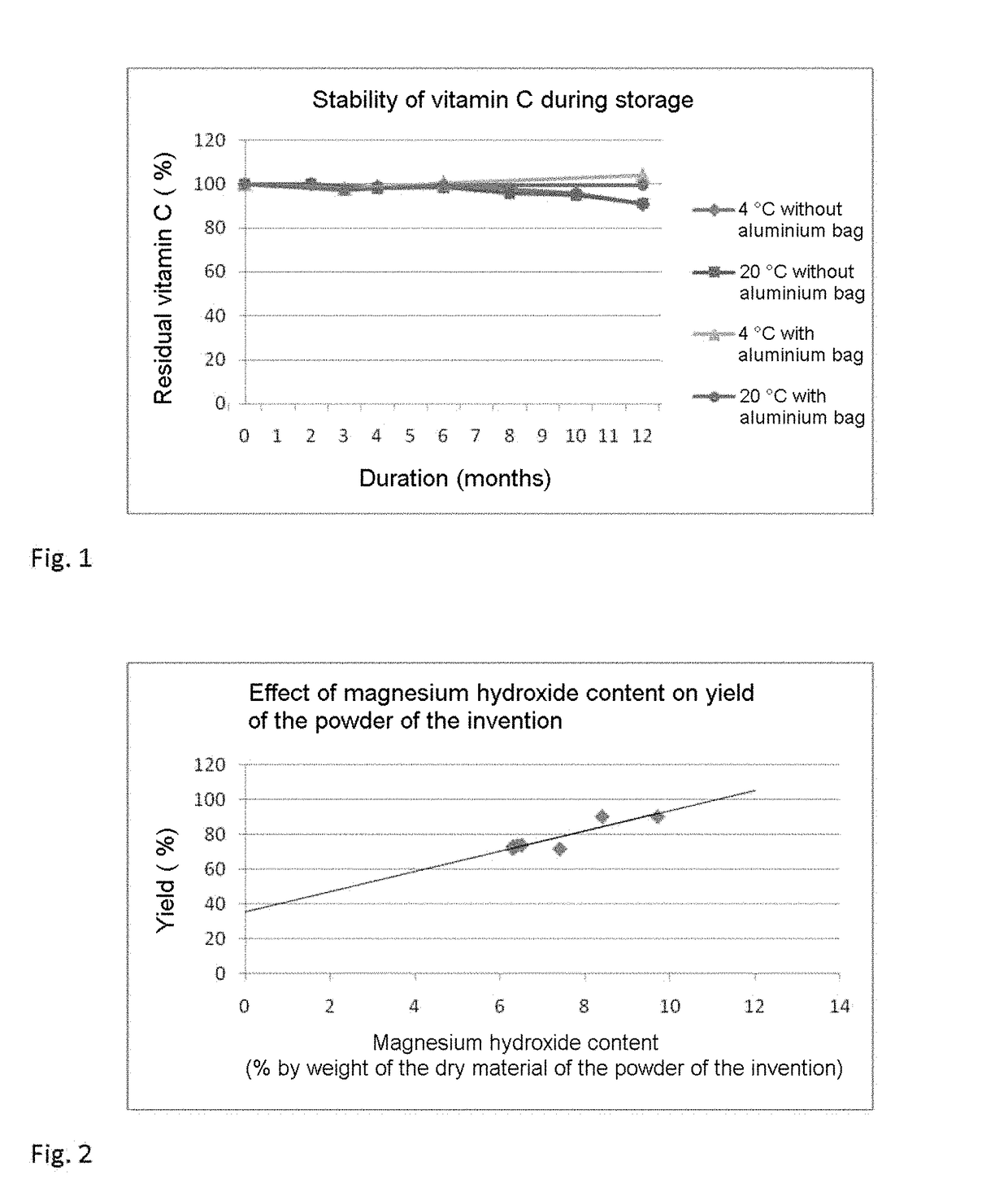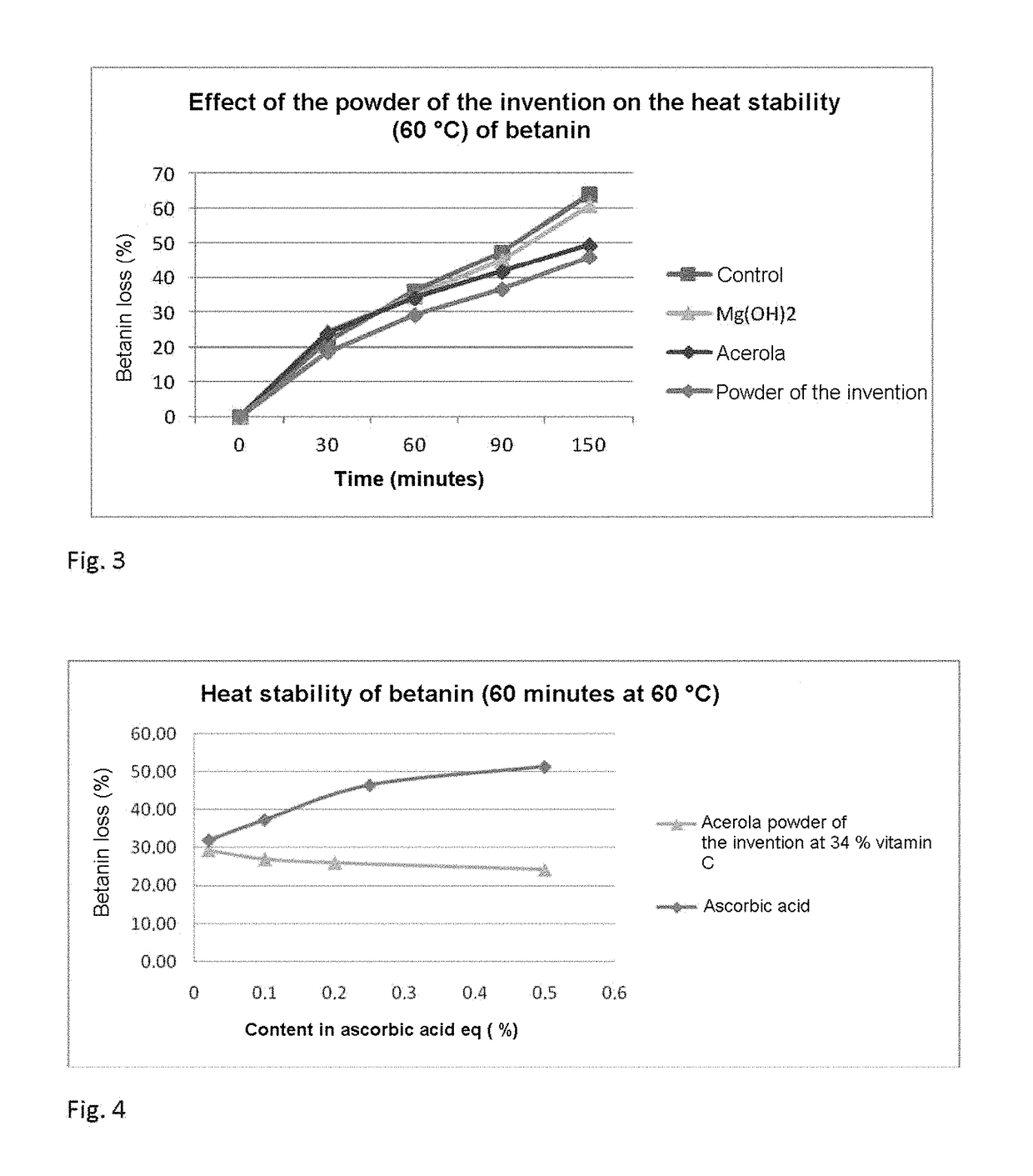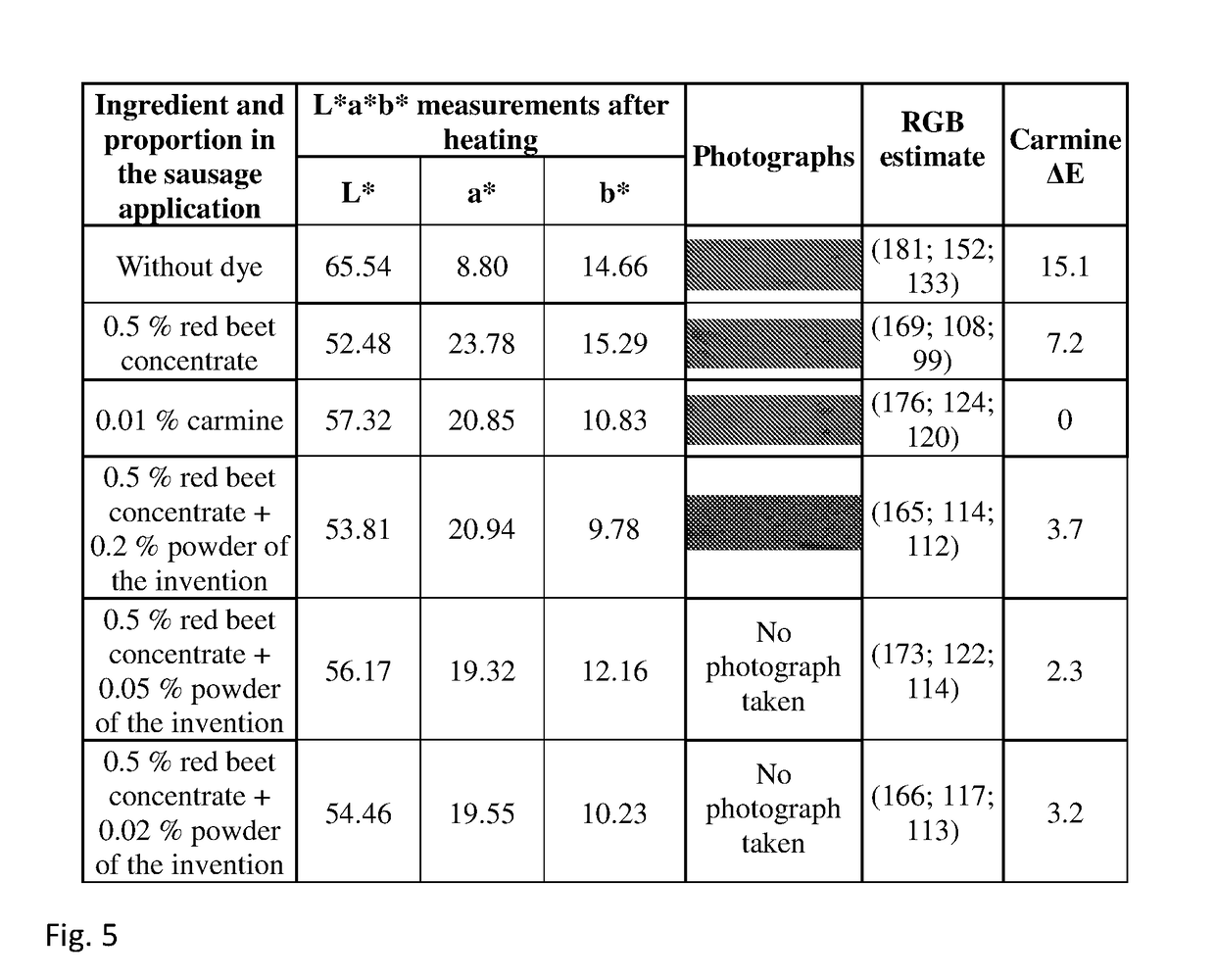Stabilisation of natural dyes by an acerola powder
- Summary
- Abstract
- Description
- Claims
- Application Information
AI Technical Summary
Benefits of technology
Problems solved by technology
Method used
Image
Examples
example 1
n and Solubilisation Properties of a Powder According to the Invention
i. Production of a Powder According to the Invention
[0045]Taking into account the features of the acerola fruit juice concentrate employed (50° Brix, 17% vitamin C), the pH of the mixture was stabilised at 4.5 with 92% acerola fruit juice concentrate and 8% magnesium hydroxide (percentages expressed relative to the dry material).
[0046]The amount of water to be added was then calculated so as to obtain a ° Brix value for the acerola fruit juice concentrate / magnesium hydroxide / water mixture of 30° Brix.
[0047]Consequently, the following formulation was prepared according to the method below:
[0048]
RecipeRaw(% of dryAmount employedmaterialmaterial)pH(kg)Acerola fruit923.01420juiceconcentrateMagnesium 81415hydroxideWater—7.61300
[0049]The materials were mixed in a vat and the mixture was spray-dried (inlet temperature 160° C., outlet temperature 86-88° C.). The powder was screened with a 650 μm mesh and packaged in alumi...
example 2
nt Potential of the Powder of Example 1 Versus Ascorbic Acid
[0059]Tests performed in vitro illustrate the properties of the powder of the invention in comparison with the single effect of ascorbic acid. The table below shows that the powder of Example 1, in comparison with ascorbic acid, has a greater antiradical and antioxidant activity than that of equivalent concentrations of ascorbic acid.
[0060]
TABLE 2Evaluation of the antioxidant power of acerola powder versus ascorbicacidPowder of theMethodinventionAscorbic acidAntiradical activity (% of90.170.6*trapping of the free radicalDPPH at the fixedconcentration of 0.44 mg / mlascorbic acid eq)Overall antioxidant power5834(g / 100 g of product inascorbic acid eq)*Ascorbic acid tested in combination with Mg(OH)2 in the proportions present in the powder of the invention.
example 3
the Powder of the Invention on the Stabilisation of Red Pigments from Red Beet
i. Proof of Stabilisation of Red Beet in a Cooked Meats Model
[0061]The powder of Example 1 was tested in a food model as stabiliser of red beet pigments. It was incorporated into a red beet juice concentrate in a proportion of 40%, 10% and 4% (40 g, 10 g and 4 g of the powder of Example 1, respectively, added to 100 g of red beet concentrate of about 70° Brix and with about 0.6% to 0.7% of betanin and a pH of 4.44), these mixtures (the pH of which is not significantly different following addition of the powder of the invention taking into account the pH and the proportion of the powder of the invention used) themselves having been incorporated into an emulsion base used for the manufacture of fine-texture sausages. After heating for 20 minutes at 80° C., colour was measured using a L*a*b* system (Minolta CM5 spectrocolorimeter, D65 light source, 10° angle, reflection).
[0062]The table presented in FIG. 5 pr...
PUM
 Login to View More
Login to View More Abstract
Description
Claims
Application Information
 Login to View More
Login to View More - R&D Engineer
- R&D Manager
- IP Professional
- Industry Leading Data Capabilities
- Powerful AI technology
- Patent DNA Extraction
Browse by: Latest US Patents, China's latest patents, Technical Efficacy Thesaurus, Application Domain, Technology Topic, Popular Technical Reports.
© 2024 PatSnap. All rights reserved.Legal|Privacy policy|Modern Slavery Act Transparency Statement|Sitemap|About US| Contact US: help@patsnap.com










